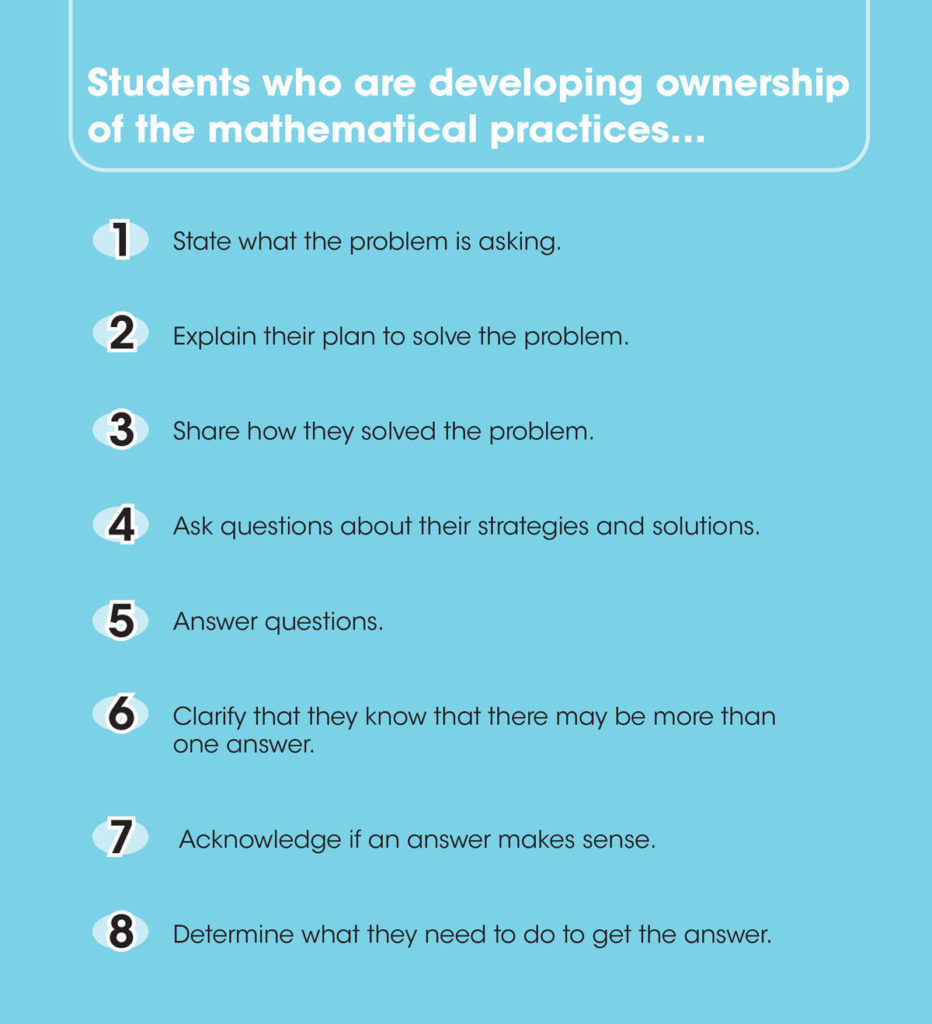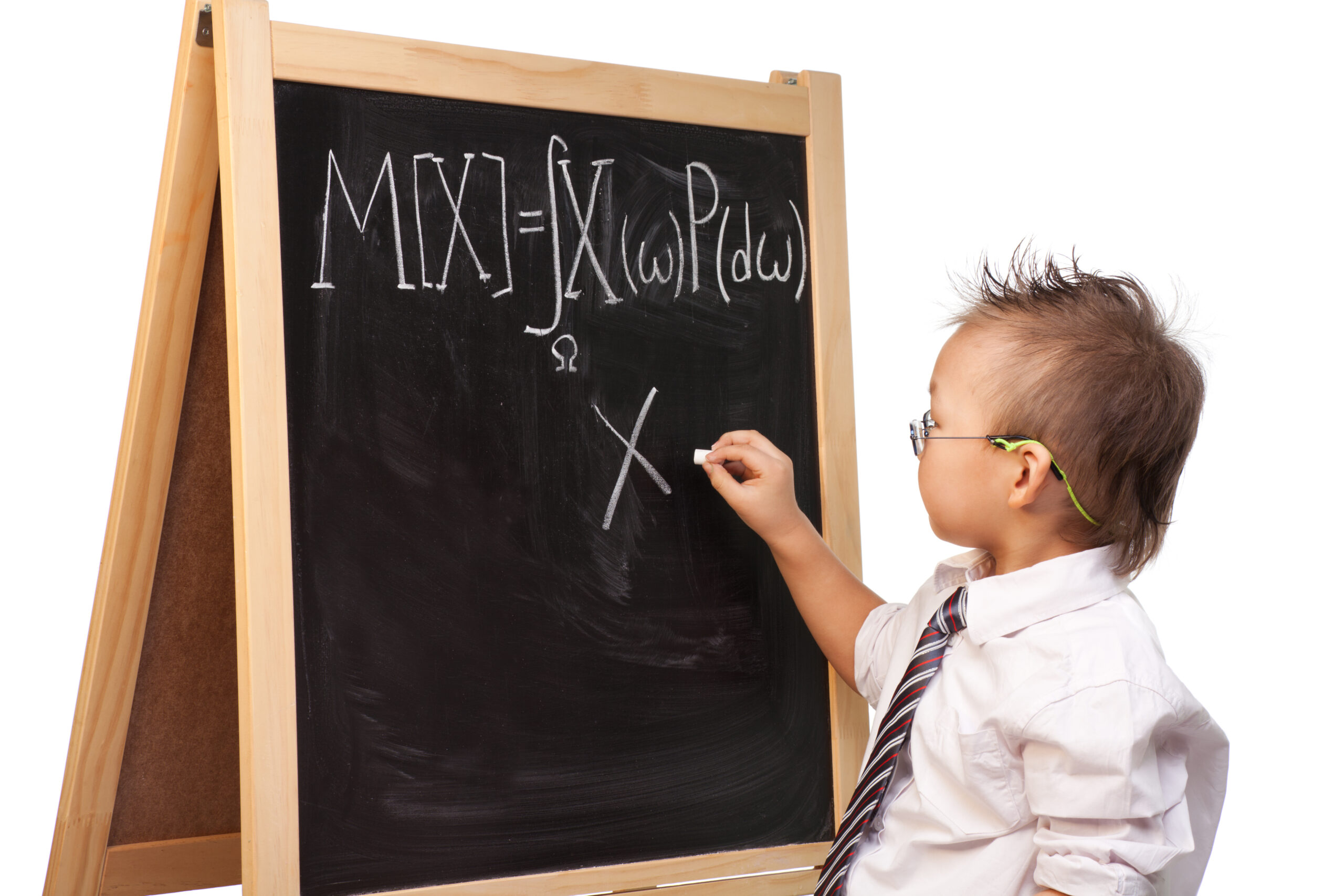Share this article.
Many math teachers feel it is their job to teach their students how to do math—add, subtract, multiple, and divide. And to do this with all sorts of numbers—whole, positive, negative, fractions, percentages, and decimals. While these procedural skills are crucial, it is also the teacher’s job to teach students how to think like a mathematician. The Common Core State Standards for Mathematics brought together this vast array of research and instructional expertise to present a clear framework for metacognition in mathematics by placing a strong emphasis on the equal importance of procedural skill and mathematical understanding. This is what is called metacognition. Metacognition in the math classroom is essential for the development of lifelong, problem-solving skills. This understanding is where the academic gains will be seen.
The Role of the Student
The student’s role is to be able to articulate their thinking. For greater academic success, students must be able to state what they are learning and why, can explain how they learn best, can articulate when they are learning and when they are struggling, and understand their role in the learning.
 We call these articulations, Ownership Statements. These statements help the student articulate their thinking—their metacognition—out loud. Over time, students should be able to utilize these statements to clarify their conceptual understanding, enhance computational fluency, and refine their problem-solving skills, with their thinking gradually deepening.
We call these articulations, Ownership Statements. These statements help the student articulate their thinking—their metacognition—out loud. Over time, students should be able to utilize these statements to clarify their conceptual understanding, enhance computational fluency, and refine their problem-solving skills, with their thinking gradually deepening.
For example, when asked, “What is the problem asking you to do?” the answers become more complex as the math becomes more complex.
Examples of Ownership in Action
First Grade Student
The problem is asking me to subtract five from twelve. I can draw a group of twelve circles. “X” out five, and count how many are left. If I get stuck, I can use counters instead of my drawing.
Fourth Grade Student
The problem is asking me to figure out how much total money Kris spent. I can start to solve the problem by identifying the important information. Kris bought three shirts for $12 and one skirt for $15. I need to figure out how much everything costs all together. First, I can multiply 3 times 12 to find out how much the shirts costs. I can use the equation 3 x 12 to help me. The shirts cost $36. Then I can add $15 to $36 to find the total.
Seventh Grade Student
The problem is asking me to find out how much time Leo spends on his science homework. I can solve this problem by using my understanding that a ratio compares two numbers. This problem gives me the ratio of time spent on math and science homework and the exact amount for math. I can take that information to set up the ratios in fraction form and efficiently cross multiply to find the amount of time for the science homework.
High School Student
The problem is asking me to find the slope of a line that goes through the ordered pairs (4, 2) and (–3, 16). I start by reminding myself that slope is defined as “rise over run.” I also remember that rise of run is change in y divided by change in x which is also called m. Using that formula, I can solve the problem in more than one way by using arithmetic or by graphing. Understanding various approaches to solutions is important because it helps me make better sense of what I’m doing and persevere if I struggle.
The Role of the Teacher
The teacher’s role is to fosters students’ metacognition by asking questions that encourage students articulate their thinking and mathematical understanding. Marilyn Price-Mitchell suggests that “When teachers cultivate student’s abilities to reflect on, monitor, and evaluate their own learning, students become more self-reliant, flexible, and productive.” However, it would be a rare classroom indeed in which students spontaneously started using Ownership Statements.
Most students need a great deal of explicit instruction, modeling, and coaching before they develop the kinds of metacognitive skills that allow them to take ownership of their learning. This makes the role of the teacher a crucial one in the fostering of metacognition.
Because the teacher is the person in the school who knows the most about the students, it is important that they teacher be allowed to determine when to offer supports to students. One of the most effective methods to develop this mathematical metacognition is to ask specific questions that push student thinking and processing.
Questions that Foster Metacognition
The teacher does this by providing students with Questions to Foster Metacognition to help develop their thinking skills. These can be thought of as “what teachers should be asking”—or, more accurately, ideas teachers can use to help students apply the practice standards in grade-appropriate ways.
For example:
- What is the problem asking you to do?
- What tools could you use to help you?
- What are some other ways to solve it?
Questions like these help students expand their thinking, develop metacognitive skills, and become more aware of their own strengths and weaknesses.
 According to Maryellen Weimer, questions are one of the “explicit and concerted ways we make students aware of themselves as learners. We must regularly ask, not only ‘What are you learning?’ but ‘How are you learning?’ We must confront them with the effectiveness (more often ineffectiveness) of their approaches. We must offer alternatives and then challenge students to test the efficacy of those approaches.”
According to Maryellen Weimer, questions are one of the “explicit and concerted ways we make students aware of themselves as learners. We must regularly ask, not only ‘What are you learning?’ but ‘How are you learning?’ We must confront them with the effectiveness (more often ineffectiveness) of their approaches. We must offer alternatives and then challenge students to test the efficacy of those approaches.”
Later, these questions can and should be handed over to the students themselves. For example, the teacher can model asking a question and then encourage students to ask each other the same question, followed by a student self-reflection. All that is required is a quick change in pronoun.
- The teacher asks a student, “What is the problem asking you to do?”
- A student asks his or her partner, “What is the problem asking you to do?”
- A student asks himself or herself, “What is the problem asking me to do?”
It is important to recognize the need for a teacher to model how to use the same question to drive cooperative and collaborative group work and self-reflection. It is ultimately when students begin using these kinds of questions to monitor their own thinking processes that they will own their learning and be well on their way to using these same skills as they reflect and grow in their personal life.
Continue the Learning
Check out these articles and resources to continue your learning about this topic…
The Learning Brief
In this article you learned…
- Providing students with questions to foster metacognition helps them expand their thinking, develop metacognitive skills, and become more aware of their own strengths and weaknesses.
- The Questions to Foster Metacognition can be thought of as “what teachers should be asking”—or, more accurately, ideas teachers can use to support students’ metacognition in grade appropriate ways. These questions should be modeled by the teacher and then gradually handed over to the students themselves.
- It is imperative that we teach our students to think like mathematicians by asking questions that foster metacognition and teach them to speak like mathematicians when making ownership statements that demonstrate that they are actively integrating both cognitive and metacognitive skills, both mathematical content and mathematical practice.
Can you imagine building an environment full of motivated, engaged, and eager students who own their learning?
We can.

